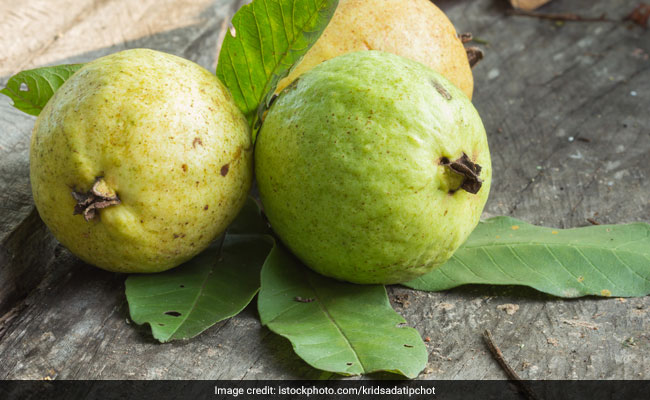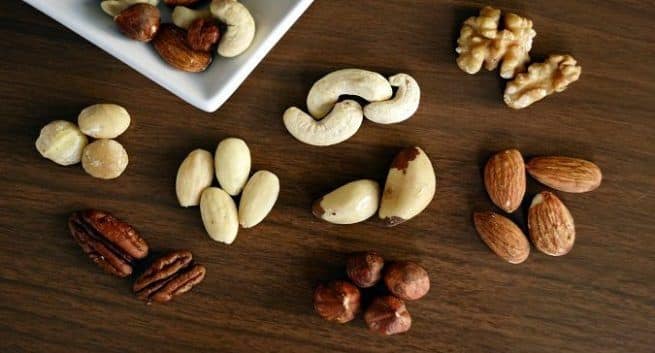Even though coffee has long been an integral part of the daily routines of many people around the world, coffee drinking, at times, has been looked at as a vice or a crutch to get some quick energy during the day. You might even have been told that coffee could raise your blood pressure, give you ulcer, impair sleep, dehydrate you, and maybe even cause cancer. For 25 years, the World Health Organization (WHO) had classified coffee as a possible carcinogen that could lead to bladder cancer.
Then things began to change a few years ago. In June 2016, the WHO, after reviewing 1,000 studies that showed coffee is not a cancer culprit, reversed course, saying that coffee is no longer classifiable as a carcinogen and has no carcinogenic effects on cancers, including those of the pancreas and prostate. In fact, it may even reduce the risk of liver and uterine cancers.
In recent years, tons of research on coffee have been published. Most of them focus on caffeine but coffee literally contains over 1,000 chemical compounds, including antioxidants (like chlorogenic acids) and diterpenes. These contribute not only to the unique flavour but also the many physiological effects of coffee.
Some studies show caffeinated and decaffeinated coffee as having the same health effects, which suggests that the other compounds in coffee play the role. Caffeine and some of these other substances in coffee seem to have their good and bad sides, and coffee's overall effect may depend on how much they cancel each other out. It gets rather complicated.
In the following, you will find out the latest scoop on where coffee stands on different health conditions, what to avoid, and how to get the most benefits out of your daily cup of joe.
Neurodegenerative Disorders
The effects of caffeine on the brain have been well researched. Caffeine is the most commonly consumed psychoactive drug in the world. Some of its behavioural effects, such as arousal, may resemble those produced by cocaine, amphetamines, and other stimulants. Coffee consumption accounts for about 75% of the adult intake of caffeine in the U.S., although that might be changing among younger adults with the growing popularity of energy drinks.
The caffeine content of coffee drinks varies tremendously, depending on the type of beans used, how they are roasted and prepared, and the strength of the coffee. The following is a comparison of caffeine content in various types of caffeinated drinks.
________________________ Serving Size/Caffeine (mg)
Home-Brewed Coffee _______ 8 oz /95
Starbucks Brewed Coffee ____ 8 oz/130-190
Cold Brew Coffee ___________ 8 oz/100-200
Espresso __________________ 1 shot/64-75
K-Cup Coffee Pods _________ 1 pod/75-150
Instant coffee ______________ 8 oz/60-75
Black Tea _________________ 8 oz/50
Green Tea _________________ 8 oz/35
Red Bull ___________________ 8.4 oz /80
Caffeine gets absorbed in the stomach and small intestine and then distributed throughout the body, including the brain. The amount circulating in the blood peaks 30-45 minutes after consumption.
Caffeine is metabolized in the liver. Tobacco and marijuana accelerate caffeine metabolism, oral contraceptives slow it down. Researchers have identified genes (CYP1A2 or CYP2E1) that influence a person's rate of caffeine metabolism, which explains why some people are more sensitive to caffeine than others.
Caffeine has multiple targets in the brain but the main ones are the adenosine receptors. Adenosine is a brain chemical that dampens brain activity. By hogging adenosine's receptors, caffeine sets off a chain of events that affects the activity of dopamine, another important brain chemical, and the areas of the brain involved in arousal, pleasure, and thinking.
- Parkinson's disease (PD)
PD is a long-term degenerative disorder of the central nervous system that mainly affects the motor system. The part of the brain that is affected by PD, called the striatum, has many adenosine receptors.
- A large number of epidemiological studies report an inverse, dose-responsive relationship between coffee consumption and the risk of developing PD. Drinking coffee appears to reduce or delay the development of PD.
- The first prospective study on 8,004 Japanese American men living in Hawaii over a period of 27 years reported an inverse association between PD incidence and those drinking more than 4 cups of coffee a day. The coffee drinkers showed a 5-fold reduced risk of PD compared to non-drinkers. The study showed no protection from decaffeinated coffee though, pointing to caffeine rather than other substances in coffee as the contributing factor.
- Dementia/Alzheimer's disease (AD)
Dementia is associated with diminished cognitive skills such as memory, reasoning, and communication to the point that it interferes with daily activities. AD is the most common type of dementia. Though the precise causes of AD are still unknown, this neurodegenerative condition is a result of brain cell death due to the formation of beta-amyloid peptides in the brain, which are mis-folded strands of a protein called tau.
- Majority of the studies (about 3 out of 5) support coffee's favourable effects against dementia/AD. These studies suggest that regular consumption of 3-5 cups per day over a lifetime reduces the risk of dementia/AD at late-life. It seems that coffee consumption is particularly beneficial before the occurrence of the disease, i.e. during the pre-morbid phase.
- Cognitive Aging
- Research suggests that habitual coffee consumption can help reduce cognitive decline in older adults.
- Caffeine improves attention span, reaction time, psychomotor performance, cognitive function, verbal memory, as well as feelings of well-being in the elderly. It appears that caffeine may help to reverse the effects of cognitive decline by stimulating the energy resources of the elderly.
- In women, caffeine helps improve performance during more complex tasks requiring sustained attention.
Cardiovascular Disease (CVD)
CVD generally refers to conditions affecting the heart and circulation, including coronary heart disease, heart attack, and stroke. Each of these conditions can be affected by risk factors including blood pressure, cholesterol, and homocysteine levels.
- Research into coffee consumption and CVD has suggested that a moderate intake of coffee, around 3-5 cups per day, may reduce CVD mortality risk.
- Coronary Heart Disease (CHD)
CHD, also known as coronary artery disease or ischemic heart disease involves the reduction of blood flow to the heart muscle due to build-up of plaque in the arteries of the heart.
- Many studies suggest a protective effect, particularly in women, at intakes of around 3-5 cups per day. Higher consumption does not provide additional benefits.
- Stroke
A stroke occurs when blood supply to the brain is interrupted or reduced, preventing brain tissue from getting oxygen and nutrients, causing cell death. There are two main types of stroke: ischemic, due to lack of blood flow, and haemorrhagic, due to bleeding.
- Most of the studies reviewing the association between coffee consumption and stroke have suggested that drinking 3-5 cups of coffee per day is associated with a reduced stroke risk, particularly in women.
- Atrial Fibrillation (AFib)
AFib is the most common cardiac arrhythmia and involves the two upper chambers (atria) of the heart. People with AFib usually have a significantly increased risk of stroke.
- To date, research has not demonstrated an association between coffee consumption and risk of AFib. Some studies have even suggested that coffee consumption may have a protective effect.
- Blood Pressure (BP)
- The association between coffee consumption and blood pressure is not conclusive, with studies reporting conflicting results. Researchers suggest the variability in BP response may be partly explained by genetic risk of high BP in some individuals, hence, further investigation is required before conclusions can be drawn.
- Cholesterol
- The diterpenes cafestol and, to a lesser extent, kahweol, in coffee oil can raise the blood levels of both total and LDL cholesterol. Whether these diterpenes permeate into brewed coffee, and to what extent, depends on the brewing method.
- For Scandinavian boiled coffee, French Press, Greek, and Turkish coffee, these components can pass into the brew, whereas they are largely retained in the paper in filtered coffee. Espresso coffee contains about half the amount of diterpenes of unfiltered coffee, however, since it is served in small quantities, the effect on cholesterol levels is negligible.
- Trials using filtered coffee demonstrate virtually no effect on blood cholesterol levels, whereas consumption of unfiltered coffee can increase cholesterol levels. However, the effect appears to be transient.
- Research on cafestol and kahweol show that they may also have health benefits that are lost when they are filtered out. Both seem to have some anticancer effects and may be good for the liver.
- Homocysteine
Homocysteine is an amino acid that the body produces. Elevated homocysteine levels may indicate a person has a vitamin B-6, B-12, and folate deficiency or an increased risk for CVD.
- Studies have shown that high coffee consumption (6-10 cups per day) increases levels of homocysteine but homocysteine also decreases when coffee consumption is stopped. Apart from the caffeine, research indicates chlorogenic acid, which is the main antioxidant in coffee, may also play a role in pushing up homocysteine levels.
Diabetes
Diabetes refers to diseases that involve problems with the hormone insulin. Normally the pancreas releases insulin to help your body store and use the glucose from the food you eat. Diabetes occurs when the pancreas produces very little or no insulin, or when the body does not respond appropriately to insulin.
Type 1 diabetes is an autoimmune disease whereby your body attacks the pancreas and the organ is damaged and cannot make insulin. With type 2 diabetes, your pancreas usually still makes some insulin but you have insulin resistance and the body does not respond to it like it should.
Diabetes is characterized by high levels of glucose in the blood. Glucose is vital to your health as it is an important source of energy for the cells that make up your muscles and tissues. It is also your brain's main source of fuel. However, too much sugar in the blood can lead to serious health problems.
- There is a huge body of evidence suggesting that drinking 3-4 cups of coffee per day is associated with about 25% lower risk of developing type 2 diabetes (but not type 1), compared to consuming none or less than 2 cups a day.
- Interestingly, decaffeinated coffee also demonstrates similar inverse associations. Tea, however, has no effect on diabetes risk. The results point to the possibility that the health benefits come from the other compounds in coffee.
- In mice studies, scientists found that the diterpene cafestol significantly improves insulin sensitivity and lowers blood glucose levels of mice fed a higher dose of cafestol.
Cancer
- Research is quite clear that coffee drinking is not a cause of female breast, pancreas, bladder, and prostate cancers, and may reduce the risk of liver and uterine cancers. However, the evidence is inadequate for other cancer types.
- Recently, California requires coffee houses to post a warning label that says coffee contains acrylamide, which is a possible link to cancer based primarily on genotoxicity experiments in animals. Acrylamide is a chemical produced during the coffee roasting process. It is also found in French fries, toasted bread, snack foods like potato chips and pretzels, crackers, biscuits, cookies, cereals, and cigarettes.
- The amount of acrylamide in coffee varies (dark roasts has less than light roasts), and is often quite small compared to amounts found to cause cancer in animals. Two large studies in humans found no association between dietary acrylamide and risk of several cancers. Nevertheless, further research is needed to fully understand the biologic mechanisms associating acrylamide consumption and cancer risk.
Obesity
- Researchers found that the amount of caffeine in one standard cup of coffee is enough to stimulate brown fat activity. Brown fat tissue is involved in heat generation as well as glucose and fat burning. These cellular activities that occur after drinking coffee are not present after drinking water. Hence, coffee may have the potential to help improve weight management.
Athletic Performance
- Consuming a cup of coffee prior to working out enables an athlete to train longer and with greater power output. Caffeine has been shown to improve endurance levels and resistance to fatigue.
- One study shows that drinking coffee reduces post-workout muscle soreness and shortened recovery time compared to a placebo.
Dehydration
- Science has proven that a moderate intake of coffee each day will not lead to dehydration. Researchers measured total body water and urinary and blood hydration markers to evaluate hydration status. They found that coffee drinkers have the same hydration from coffee as from drinking water.
- Hydration is about getting water inside your cells, therefore, the mild diuretic effects of caffeine do not cause you to become dehydrated. However, drinks like coconut water that empty from the stomach at a slower rate than coffee will provide hydration over a longer time period.
Best Types Of Coffee
While there are multiple benefits to drinking coffee, it is crucial you are drinking dark roast and organically/biodynamically grown coffee.
Coffee may be produced as a light to dark roast, each with a unique taste and acidity level. Dark roast coffee has the most health benefits due to the high level of antioxidants and low level of acrylamide.
It is equally important to buy organically/biodynamically grown coffee as coffee is a crop that is heavily sprayed with pesticides. Studies reveal that conventionally grown coffee beans contain very high chemical residues of glyphosate (Roundup), which is a carcinogen.
What To Avoid When Drinking Coffee
- Avoid consuming caffeine while pregnant as the caffeine is broken down more slowly during pregnancy and can cross the placenta, entering the growing baby's bloodstream where it cannot be broken down. Caffeine consumption has been linked to low birth weight babies, heart problems, and behavioural disorders in later life. Beware that some commercial decaffeinated coffee may contain as much as 12-25 mg of caffeine per 16-oz serving.
- Avoid if you have a food sensitivity/allergy to coffee.
- Avoid coffee if you have acid reflux or heartburn.
- Avoid caffeine if it makes you anxious, gives you tremors or palpitations.
- Avoid coffee if it raises your blood pressure to an unhealthy level.
- If you have high LDL cholesterol, it is best to drink filtered coffee. Just make sure you use paper filters that have not been bleached with chlorine.
- Some individuals are slow metabolizers of caffeine, which means caffeine will have a greater effect on your sleep than others. Avoid additional caffeine consumption after your morning joe.
- If you are not a coffee drinker, there is no reason to feel compelled to start. Coffee, however, is an excellent source of antioxidants with a small amount of magnesium and potassium. To get the most benefits, it is most desirable to drink your coffee without adding sugar. Black or with a tiny bit of cream is the best.
- Do not have your coffee way too hot as drinking very hot liquids is linked to cancer of the oesophagus.
The Bottom Line
The news on coffee is mostly good. A massive number of studies has backed up the link between drinking coffee and added longevity, reduced risk of neurodegenative diseases, cardiovascular disease, type 2 diabetes, and many types of cancer. The largest health benefits are associated with drinking 3-4 cups a day. Drinking more than 4 cups, however, has not produced additional benefits.
If you are currently a coffee drinker, there are now good reasons to relax and enjoy the habit (unless you have one of the conditions mentioned above). To reap the most benefits, just make sure you are drinking organic/biodynamically grown, dark roast coffee with no added sugar.
Carol Chuang is a Certified Nutrition Specialist. She has a MS degree in Nutrition and has been specializing in Metabolic Typing and Functional Diagnostic Nutrition for the last 13 years. She is also a Certified Gluten Practitioner and has extensive expertise in gluten-related disorders and autoimmune diseases. Although she is not currently taking on new nutrition counselling clients, she continues to write a bi-monthly nutrition newsletter and give nutrition talks.
https://ezinearticles.com/?The-Latest-Scoop-On-Coffee-Benefits-and-Risks&id=10356292











